Would you like to see magnificent natural landscapes and enjoy ancient cultures at the same time? Our 7 Days China tours including Yangtze River cruise will undoubtedly gratify your needs. The tour program will provide you with a journey of physical and psychological nourishment. During the Yangtze River cruise tour from Beijing, you may be impressed by such world-renowned historical sites such as the Forbidden City, the Temple of Heaven, the Great Wall, and many more. You can be immersed in the great Chinese civilization with its outstanding cultural heritage. Then on the cruise ship, apart from luscious food, well-equipped rooms and attentive service are ready for you to enjoy. You may be overwhelmed by the bracing sceneries along the way to the Three Gorges of the Yangtze River, the third longest river in the world. Surely, China Yangtze tour is a best choice for you to go on holiday.

So glad to meet you in Beijing for this wonderful tour! Our guide will be waiting for you, our dearest guest, with your name sign at the airport and help you check in at the hotel in downtown Beijing.
On the way from the airport to the hotel, you can have a glimpse of the amazing city, and our guide is available for your reference on this cosmopolitan city, capital of China. After check-in, it’s your private time. You can take a stroll and then have a good rest, expecting a fantastic trip in the coming days.
Located in North China, Beijing covers an area of 16,412 square kilometers with about 21.53 million permanent residents. Due to the monsoon climate in the North Temperate Zone, it boasts distinct seasons. It is the center of the politics, economy, and culture of the world’s biggest developing country. What’s more, it plays a crucial role in Chinese history as the capital of the Yuan (1271 - 1368), Ming (1368 - 1644), and Qing (1636 - 1912) dynasties successively. So the Yangtze River Cruise Tour starting from Beijing can be a good chance for you not only to enjoy picturesque sceneries with wonders but also to be nurtured with the profound history and rich culture of China.
Option: If you are motivated to glance at Beijing as soon as possible, Wangfujing Street would be a perfect choice for you. It’s the most famous shopping street in Beijing, with a long history dating back to 1915. There are all varieties of goods for daily use, local delicacies like Peking Roast Duck and sugarcoated haws on sticks, and luxury brands such as Gucci, Prada, and Armani.
Here stands an exquisite catholic church, typical of the combination of Chinese and Western classical architecture. It’s originally known as St. Joseph Church or East Church (Dongtang in Chinese). As one of the four renowned catholic churches in Beijing, the complex was originally established in 1655. It’s said that at the end of the Ming Dynasty, two missionaries from Italy and Portugal respectively were doing missionary work in Sichuan province in Southwest China, when soldiers of the Qing Dynasty captured and transferred them to Beijing. Later, they were appointed to serve the royal court. Emperor Shunzhi (1638-1661) awarded them an official residence where they set up the church. After repeated renovation, now it has a large great hall that can accommodate about 1,000 people for attending Mass. If you are lucky, you can see a couple posing for their wedding pictures and become a witness to their happiness.
Today, your China Yangtze River tour begins and amazing stops are waiting for your visit!
After breakfast, the guide will take you to the first destination - Tian’anmen Square in downtown Beijing. With 440,000 square meters, it is nearly five times as large as Place de la Concorde in Paris. The square has witnessed many monumental moments in Chinese history such as the May Fourth Movement (a patriotic campaign led by the Chinese youth), the December 9th Movement (a protest against Japanese aggression), and the great ceremony of the founding of the People’s Republic of China. Here you can see a national flagpole, and a flag-raising ceremony is here held every day. The Monument to the People’s Heroes, the Great Hall of the People, and the National Museum of China are among the highlights here.
Undoubtedly, the most conspicuous building on the square is Tian’anmen Tower, deemed as a symbol of the People’s Republic of China, and it was the front gate of the imperial city of the Ming and Qing dynasties. It has five doors whose passage was subject to rigid regulations in the above two dynasties. The mid-door was exclusive for emperors, except for the following special occasions: parents of emperors entered the imperial city through it; on the wedding day of emperors, empresses passed through it for the wedding ceremony; the new number one scholar would exit the Forbidden City through it after he was summoned by the emperor and proclaimed the topmost one in the imperial competitive examination. With these three exceptions, no one was allowed to pass through the mid-door and any violation would be punished severely. The two side doors on both sides of the middle one were for imperial nobles, and top officials of the third rank or higher.
Then behind the great gate is the Forbidden City (closed each Monday) for you to explore. It’s the largest existing and best-preserved imperial palace worldwide, dubbed as the No. 1 of the world’s five great palaces. Here you will be amazed at its large numbers of rooms and exquisite artistic works.
By the way, you may be fascinated by the Nine-Dragon Screen in the palace, which is made of painted glazed tiles. However, among these tiles, there is a wooden piece on a white dragon. It’s said that these tiles were made in highly complicated procedures for 49 days. When artisans were putting them on the screen, one piece was broken accidentally. They were all startled because it’s impossible for them to finish the screen on time and they would be executed. The head artisan called Ma Dechun told others to keep it secret. With arduous efforts, he made a wooden piece that looked much like the real glazed tile. Finally, he managed to deceive Emperor and the officials, and barely escaped the punishment.
After lunch, the first destination is the Temple of Heaven, the world’s biggest architectural complex of worship. It’s an altar built in 1420 for emperors to worship Heaven and pray for a bumper harvest. When you are entering this holy place, you may gradually feel a sense of awe, experiencing inner peace. Then many interesting architectural structures inside are beckoning you, like Three-Tone Stone meaning three sound stones. Three-Tone Stone is on the axis road to the Imperial Vault of Heaven, with the three flagstones denoting Heaven, earth, and man respectively. A sound echoes once on the first flagstone, twice on the second one, and three times on the third one.
After you are overwhelmed by the wonderful unity between Heaven, earth, and man in the Temple of Heaven, you can go to the Summer Palace to enjoy picturesque sceneries as emperors did in this ancient imperial garden. The large garden is divided into two parts, namely the Longevity Hill and the Kunming Lake. It encompasses over 3,000 ancient buildings and one of the most renowned structures here is the Hall of Benevolence and Longevity. It is in this hall that Emperor Guangxu and Empress Dowager Cixi dealt with government affairs when they lived here. There is a long corridor famous for the colorful paintings inside. It’s the longest gallery in the world, and you can appreciate the traditional Chinese paintings here.
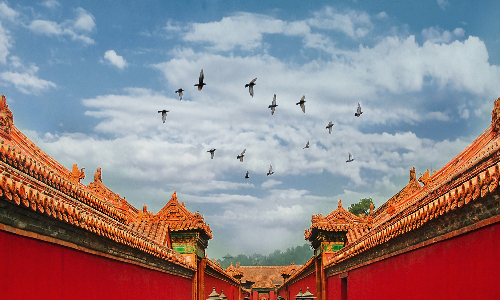
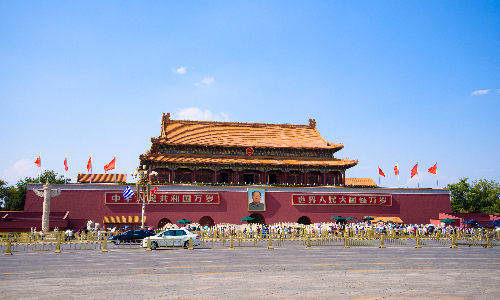
Today, let’s leave for the Chang Tomb of the Ming Tombs, 50 kilometers away and about one-hour drive from downtown Beijing.
Built in 1409-1644, the Ming Tombs are the world’s largest imperial mausoleum cluster with thirteen tombs of emperors of the Ming Dynasty. With an area of 120,000 square meters, the Chang Tomb is the first and arguably the most crucial tomb among them. It’s where Emperor Yongle (1360-1424) and his empress were buried. Emperor Yongle was a controversial ruler, as he grabbed his nephew’s crown and yet he made great contributions to the prosperity of the county by virtue of his decisive policies. He consolidated China’s territorial integrity, paid much attention to water conservancy, and mandated the compilation of Yongle Encyclopedia (a collection of ancient Chinese books and records). More importantly, he appointed a famous official called Zheng He as an envoy to visit over 30 countries, which is better known as Zheng He’s Voyages. Due to this opening-up diplomatic policy, maritime trade boomed with tea, silk, ceramics, and many other Chinese special products brought to remote places as far as the Port of Beira in Mozambique and Mecca in Saudi Arabia. Meanwhile, China has established the enduring friendship with many countries, especially countries in Southeast Asia. What’s more, the emperor ordered the construction of the Temple of Heaven after he relocated the capital of the Ming Dynasty from Nanjing in East China to Beijing. Undoubtedly, you can expect a wonderful visit to his tomb featuring feng shui (geomancy) and get to know more about this extraordinary emperor.
After lunch, you will be on an about 50-minute drive to the Mutianyu Great Wall in the east of the Chang Tomb. The world-renowned Great Wall will be in your sight. Dubbed as one of the Seven Wonders of the Middle Ages in the world, it was designed to be a military defensive system with sophisticated structures. No wonder it’s the longest wall globally with a total length of 21,000 kilometers. This splendid wall dates back to the Qin Dynasty (221-207) and was renovated in many different dynasties. Set up in the Ming Dynasty, the Mutianyu Great Wall is the longest section of the Great Wall, and it was geographically critical to the defense of the ancient Beijing city. At the foot of the mountains, you probably can’t wait to climb up the wall and appreciate the magnificent scenery on it at once. But you may be overwhelmed by its height. Don’t worry, because you have multiple choices: 1. Take a cable car (fully enclosed, best for the elderly) upwards and downwards; 2. Take a chairlift (open-air, suitable for tourists with no difficulty in walking) upwards and downwards; 3. Take a chairlift upwards and a toboggan (funny) downwards. So you can reach its top effortlessly and enjoy the awesome spectacle of the dragon-like wall.
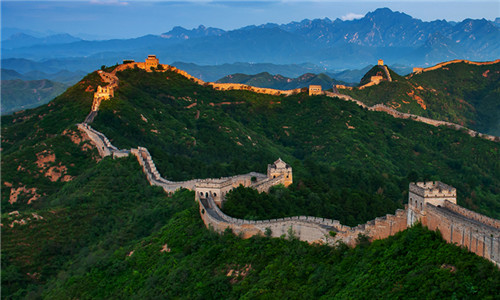
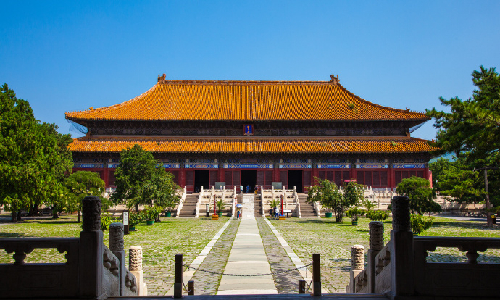
 Chongqing
Chongqing After three fantastic days in Beijing, you will fly to one of China’s most attractive cities—Chongqing! You are scheduled to take the estimated flight CA1445 11:00/14:05.
Besides a long history of more than three thousand years, Chongqing is a distinctive place with unique regional cultures developed by the tenacious and courageous locals. Furthermore, it’s a metropolitan city famed for delicacies, night scenes, and beauties. Located in southwestern China, the city is endowed with tremendous natural landscapes, especially the stunning Three Gorges of the Yangtze River. Your unforgettable Yangtze River Cruise Tour will start from here.
Upon arriving Chongqing, the local tour guide will take you to the Ciqikou Ancient Town characterized by the regional Bayu Culture and various traditional snacks. This town once got a name— Longyin Town. In Chinese, long means dragon; yin means hiding. Legend has it that when Emperor Jianwen of the Ming Dynasty was overturned by his uncle (later known as Emperor Yongle mentioned above) in 1402, as a monk, he fled to the Baolun Temple in this town and lived a secluded life there for about five years. So the small town was called Longyin Town afterwards, as dragons are a symbol of emperors in ancient China. However, until the Qing Dynasty, the Longyin Town was renamed Ciqikou (meaning export port of ceramics in Chinese) Town due to the local flourishing ceramics. Known as the Ciqikou Ancient Town now, it remains an interesting place with quaint teahouses and hilarious vendors on the street.
After that, our tour guide will take you to Chaotianmen Pier to board the Three-Gorge cruise ship. After handling all boarding procedures for you, the guide will get off the cruise ship. The boarding time ends at 20:30, and the ship sets off at 21:00. On board, there is a bar, a movie theater, a fitness centre, and many other places for fun. Now, please enjoy beautiful night scenes on both banks. Later, you can have a good rest in the well-equipped room.
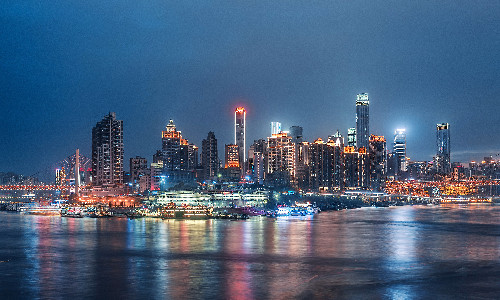
This morning, you can get up with a long enough sleep and enjoy a buffet breakfast on the ship; or otherwise, you can get up a little earlier and join in practicing Tai Chi (a type of Chinese physical exercise featuring slow, controlled movements). Later, you can read and drink a cup of tea or coffee on the deck, fully relaxed and nourished by the ambient conditions.
Today, you will have shore excursions to Shibaozhai Pagoda, then Fengdu “Ghost City” (with extra charge), or any other spot according to the cruise ship you’ve booked.
Known as one of the eight marvelous buildings in the world, Shibaozhai Scenic Area looks like a huge ship floating on a lake. Encompassed by the concrete embankment, it appears like a vivid bonsai from a distance. The 12-storey Shibaozhai pagoda, set up on a cliff in the Ming Dynasty, is made of wood, surprisingly without any nails as a whole.
Dating back almost two thousand years, Fengdu “Ghost City” is famous for the architectures and designs of the nether world built based on ancient Chinese concepts of Hell. It’s also a treasury of folk culture and art with the combination of Confucianism, Taoism, and Buddhism. Local folklore has it that when people die, their soul will be brought to the Fengdu “Ghost City”. They will face a judgment in the Palace of Hell in the “Ghost City” according to the records of their behaviors in the mortal world. Good people’s souls will go to heaven, while the bad ones will be condemned to various punishments in Hell. So the Ghost City also serves as a place to punish the bad and praise the good. In this particularly spot, you may gain a different attitude towards life. In the evening, the captain will hold a welcoming cocktail party. It will be very exciting and you can enjoy drinks, desserts, fruits, and delicious dishes.
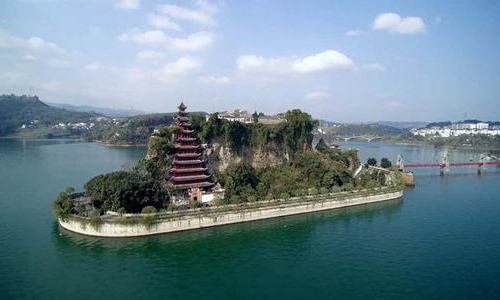
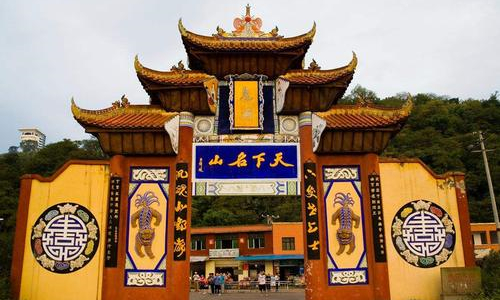
Today, you will eventually see the gorgeous Three Gorges, namely Qutang Gorge, Wu Gorge, and Xiling Gorge. Among them, Qutang Gorge is the shortest but the most precipitous one. There is an additional shore excursion to the White Emperor City. This great place is also called Poem City as it inspired many great Chinese poets to create renowned poems. Built in the Han Dynasty (202 BC-220 AD), the White Emperor City had critical military and administrative functions in feudal times. The White Emperor Temple, as an iconic building there, is over two thousand years old. It was dedicated to Liu Bei, Guanyu, and Zhangfei, who are great figures in the period of the Three Kingdoms (220-265). Standing on top of the mountain in White Emperor City, you can see the fantastic entrance of Qutang Gorge, called Kui Gate, through which the Yangtze River enters the Three Gorges from Sichuan Basin. Its image is printed on the ten-yuan note of RMB. Surely, this beautiful place will amaze you.
Then at Wu Gorge, you will be transferred to a small boat to visit Goddess Stream. The stream is 15 kilometers long, boasting jaw-dropping sceneries. Floating along the stream, you can see a pristine ravine and famous peaks of Wushan Mountain. Hold your breath and appreciate the feast for the eyes.
Tonight, there will be a farewell party in the evening. The crew members are ready to give you excellent performances like traditional Chinese dances and folk costume shows. Then you can have a good rest at night.
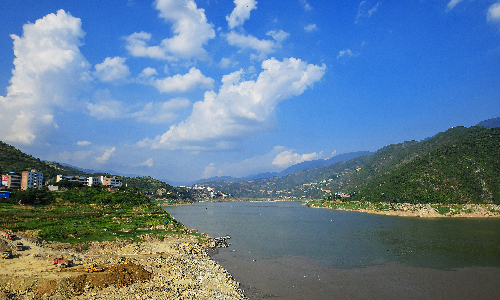
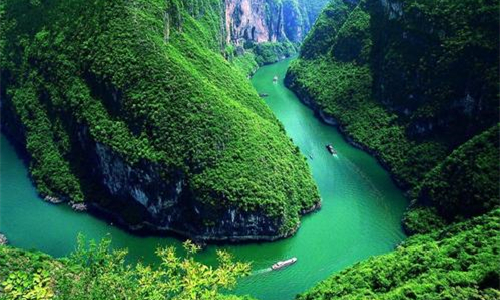
After breakfast, let’s visit the Three Gorges Dam Site. As the world’s largest water control project, the splendid dam plays a crucial role in preventing floods and droughts in the region while generating electricity.
When the cruise ship docks, you will be transferred to the Yichang Three Gorges Center Cruise Terminal. Then our guide will take you to the Yichang Railway Station or Yichang Airport. Your memorable China tour ends here.
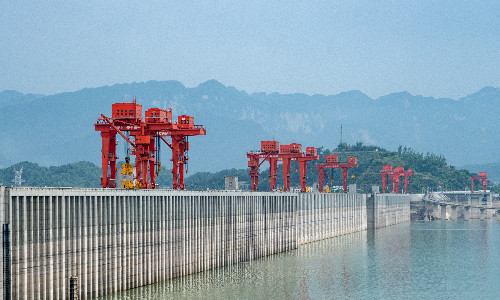
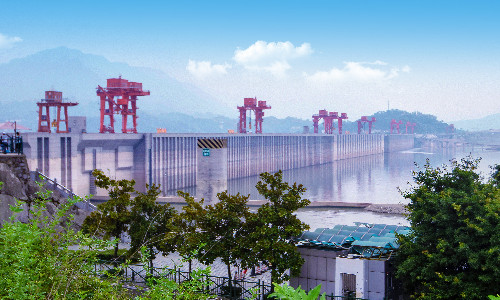
Author:Wu Hongmei
Proofreader: Lexie
| City | Five Star hotel list | Four Star hotel list |
|---|---|---|
| Beijing | Sunworld Dynasty Hotel Beijing Wangfujing | Sunworld Hotel Wangfujing |
| Chongqing | Hilton Chongqing | Yangtze Island Hotel Chongqing Jiefangbei Walking Street Branch |
| Yangtze River Cruise | Victoria Anna | Victoria Anna |
 |
![]() About your child or infant, please contact us for a discounted price.
About your child or infant, please contact us for a discounted price.



We started with a few days in Beijing & ended in Shanghai, from where we visited the Forbidden City and Great Wall. In between we visited Terra Cotta Warriors Museum, Panda Base, Shanghai Disneyland.

We had a wonderful holiday in China which will remain long in the memory. China is a breathtakingly beautiful country full of splendid temples and palaces, mountains and rivers, peaceful rural scenes and bustling shopping streets.
 QUICK ENQUIRY
QUICK ENQUIRY